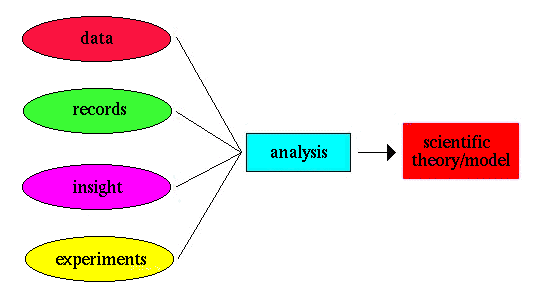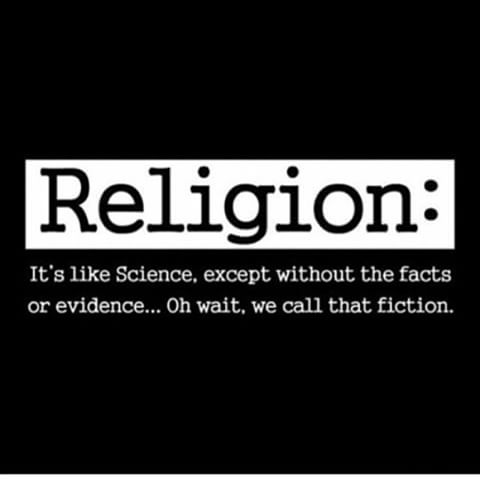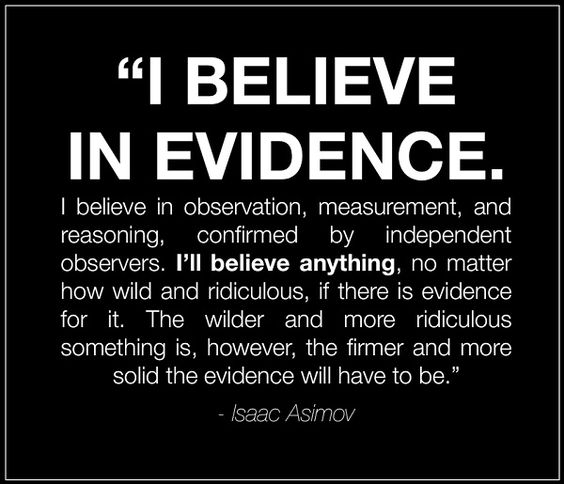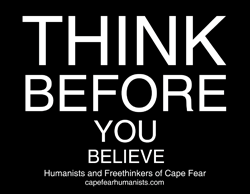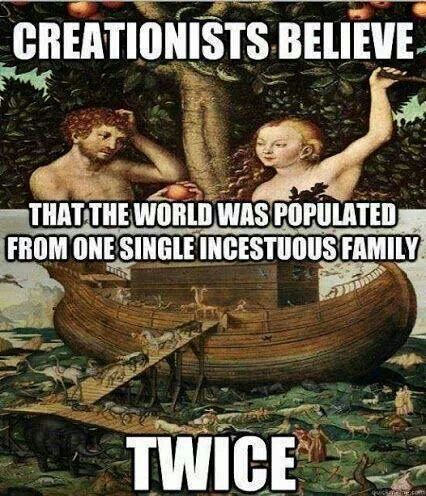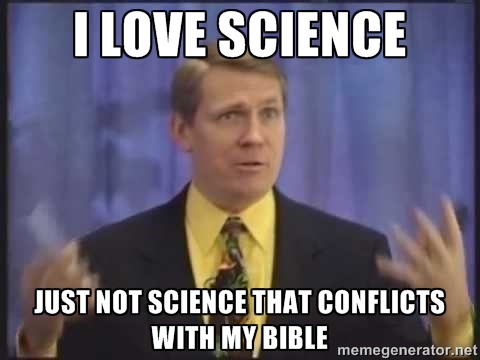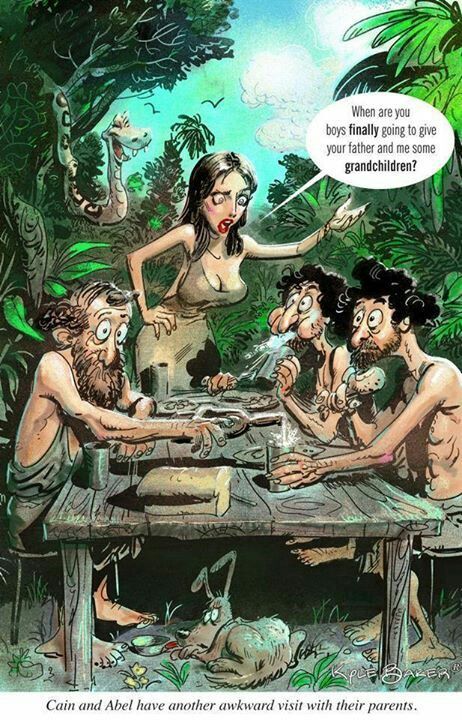| Kitzmiller v. Dover Area School District | |
|---|---|
 |
|
| Court | United States District Court for the Middle District of Pennsylvania |
| Full case name | Tammy Kitzmiller, et al. v. Dover Area School District, et al. |
| Argued | September 26, 2005–November 4, 2005 |
| Decided | December 20 2005 |
| Citation(s) | 400 F. Supp. 2d 707 (M.D. Pa. 2005) |
| Holding | |
| Teaching intelligent design in public school biology classes violates the Establishment Clause of the First Amendment to the Constitution of the United States (and Article I, Section 3, of the Pennsylvania State Constitution) because intelligent design is not science and “cannot uncouple itself from its creationist, and thus religious, antecedents.” | |
| Court membership | |
| Judge(s) sitting | John E. Jones III |
| Laws applied | |
| U.S. Const. Amend. 1; Penn. Const. Art. I, § 3 | |
Related cases
- Selman v. Cobb County School District – 2004-2005
- Edwards v. Aguillard– 1987
- McLean v. Arkansas – 1981
- Lemon v. Kurtzman – 1971
- Scopes Trial – 1925
I do not think this Christian knows what theory means in a scientific context, that’s my theory.
Is evolution a fact? How do the claims of creationists stack up against the fossil record and the actual science? Dr. Donald Prothero presents the evidence in a presentation based on his 2007 book (and more recent findings).
Prothero is a paleontologist, geologist, author and science educator. He holds a Ph.D in geological sciences from Columbia University, and he has authored over 300 scientific papers and 30 books. He is currently a research associate in vertebrate paleontology at the Natural History Museum of Los Angeles County.
https://www.youtube.com/watch?v=DjFgcOId-ZY&app=desktop
Genesis 1 (NIV)
1 In the beginning God created the heavens and the earth. 2 Now the earth was formless and empty, darkness was over the surface of the deep, and the Spirit of God was hovering over the waters.
3 And God said, “Let there be light,” and there was light. 4 God saw that the light was good, and he separated the light from the darkness. 5 God called the light “day,” and the darkness he called “night.” And there was evening, and there was morning—the first day.
6 And God said, “Let there be a vault between the waters to separate water from water.” 7 So God made the vault and separated the water under the vault from the water above it. And it was so. 8 God called the vault “sky.” And there was evening, and there was morning—the second day.
9 And God said, “Let the water under the sky be gathered to one place, and let dry ground appear.” And it was so. 10 God called the dry ground “land,” and the gathered waters he called “seas.” And God saw that it was good.
11 Then God said, “Let the land produce vegetation: seed-bearing plants and trees on the land that bear fruit with seed in it, according to their various kinds.” And it was so. 12 The land produced vegetation: plants bearing seed according to their kinds and trees bearing fruit with seed in it according to their kinds. And God saw that it was good. 13 And there was evening, and there was morning—the third day.
14 And God said, “Let there be lights in the vault of the sky to separate the day from the night, and let them serve as signs to mark sacred times, and days and years, 15 and let them be lights in the vault of the sky to give light on the earth.” And it was so. 16 God made two great lights—the greater light to govern the day and the lesser light to govern the night. He also made the stars. 17 God set them in the vault of the sky to give light on the earth, 18 to govern the day and the night, and to separate light from darkness. And God saw that it was good. 19 And there was evening, and there was morning—the fourth day.
20 And God said, “Let the water teem with living creatures, and let birds fly above the earth across the vault of the sky.” 21 So God created the great creatures of the sea and every living thing with which the water teems and that moves about in it, according to their kinds, and every winged bird according to its kind. And God saw that it was good. 22 God blessed them and said, “Be fruitful and increase in number and fill the water in the seas, and let the birds increase on the earth.” 23 And there was evening, and there was morning—the fifth day.
24 And God said, “Let the land produce living creatures according to their kinds: the livestock, the creatures that move along the ground, and the wild animals, each according to its kind.” And it was so. 25 God made the wild animals according to their kinds, the livestock according to their kinds, and all the creatures that move along the ground according to their kinds. And God saw that it was good.
26 Then God said, “Let us make mankind in our image, in our likeness, so that they may rule over the fish in the sea and the birds in the sky, over the livestock and all the wild animals,[a] and over all the creatures that move along the ground.”
27 So God created mankind in his own image,
in the image of God he created them;
male and female he created them.
28 God blessed them and said to them, “Be fruitful and increase in number; fill the earth and subdue it. Rule over the fish in the sea and the birds in the sky and over every living creature that moves on the ground.”
29 Then God said, “I give you every seed-bearing plant on the face of the whole earth and every tree that has fruit with seed in it. They will be yours for food. 30 And to all the beasts of the earth and all the birds in the sky and all the creatures that move along the ground—everything that has the breath of life in it—I give every green plant for food.” And it was so.
31 God saw all that he had made, and it was very good. And there was evening, and there was morning—the sixth day.
Genesis 2:4-3:24 (NIV) – Adam and Eve
4 This is the account of the heavens and the earth when they were created, when the Lord God made the earth and the heavens.
5 Now no shrub had yet appeared on the earth[a] and no plant had yet sprung up, for the Lord God had not sent rain on the earth and there was no one to work the ground, 6 but streams[b] came up from the earth and watered the whole surface of the ground. 7 Then the Lord God formed a man[c] from the dust of the ground and breathed into his nostrils the breath of life, and the man became a living being.
8 Now the Lord God had planted a garden in the east, in Eden; and there he put the man he had formed. 9 The Lord God made all kinds of trees grow out of the ground—trees that were pleasing to the eye and good for food. In the middle of the garden were the tree of life and the tree of the knowledge of good and evil.
10 A river watering the garden flowed from Eden; from there it was separated into four headwaters. 11 The name of the first is the Pishon; it winds through the entire land of Havilah, where there is gold. 12 (The gold of that land is good; aromatic resin[d] and onyx are also there.) 13 The name of the second river is the Gihon; it winds through the entire land of Cush.[e] 14 The name of the third river is the Tigris; it runs along the east side of Ashur. And the fourth river is the Euphrates.
15 The Lord God took the man and put him in the Garden of Eden to work it and take care of it. 16 And the Lord God commanded the man, “You are free to eat from any tree in the garden; 17 but you must not eat from the tree of the knowledge of good and evil, for when you eat from it you will certainly die.”
18 The Lord God said, “It is not good for the man to be alone. I will make a helper suitable for him.”
19 Now the Lord God had formed out of the ground all the wild animals and all the birds in the sky. He brought them to the man to see what he would name them; and whatever the man called each living creature, that was its name. 20 So the man gave names to all the livestock, the birds in the sky and all the wild animals.
But for Adam[f] no suitable helper was found. 21 So the Lord God caused the man to fall into a deep sleep; and while he was sleeping, he took one of the man’s ribs[g] and then closed up the place with flesh. 22 Then the Lord God made a woman from the rib[h] he had taken out of the man, and he brought her to the man.
23 The man said,
“This is now bone of my bones
and flesh of my flesh;
she shall be called ‘woman,’
for she was taken out of man.”
24 That is why a man leaves his father and mother and is united to his wife, and they become one flesh.
25 Adam and his wife were both naked, and they felt no shame.
Science
Alec’s Evolution Pages
American Council on Science and Health (ACSH)
Andrew Skolnick
Astrology and Science An archive of evidence-based studies that study astrology under the microscope.
Bad Astronomy A well-known blog created by Phil Plait to combat various myths about astronomy
Bad Meteorology
Bad Science
Neurologica
National Center for Science Education An organization that defends the teaching of natural evolution and man made global warming in schools.
No Answers in Genesis
Panda’s Thumb
Project Reason
Quackometer
Quackwatch
Science Blogs
Science of Scams
Sense About Science
Skeptiblog
Skeptical Science A website designed by John Cook to list rebuttals to climate change denialist claims.
TalkDesign The Intelligent Design (ID) equivalent to Talk.Origins.
Talk.Origins Extensive scientific site exploring where we came from.
The Clergy Letter Project A letter signed by many religious groups that agree with the teaching of evolution in schools.
The Consensus Project
Understanding Evolution Developed by the NCSE to dispel myths about natural evolution.
Understanding Science Developed by the NCSE to counter common misconceptions about the scientific method.
University of Ediacara An online virtual university created by Talk.Origins.
Oxyaena’s Homepage A website dedicated to defending evolutionary biology against cranks such as creationists, also includes some general scientific material as well.
Exposing Religion
ABV Bible
Acharya S. Truth Be Known religion mythology archaeology history astrotheology archeoastronomy
Bad News About Christianity
Bible Inspectors Compares various explanations for difficult biblical passages.
BibViz Project List of Biblical contradictions
Brick Testament Lego characters recreate Bible stories
Christianity Disproved Beyond a reasonable doubt
Christianity Revealed
Coming Out Godless
Evil Bible
Faith Freedom
Freethought Nation
God Murders Dissecting the bible Holey Books
International Cultic Studies Association (ICSA)
Losing my Religion
Luciferian Liberation Front Parody Tracts
No Beliefs
Operation Clambake
Pissy Bishop
Purpose of Christmas Exposing Pastor Rick Warren
Religion Hurts Humanity
Rick Ross Institute for Cult Education
Skeptics Annotated Bible Also includes Book of Mormon and Quran
This is my abortion Refuting once and for all, the Pro-Life anti-abortion propaganda.
True Truths
Way of the Master Watchdog Exposing Ray Comfort, Kirk Cameron, and WOTM.
Why Won’t God Heal Amputees
The Alternative Bible Scholarship Site Explores new developments in alternative explanations of the origin of the Bible – primarily Christianity for the time being
Tammy Kitzmiller, et al. v. Dover Area School District, et al. (400 F. Supp. 2d 707, Docket No. 4cv2688) was the first direct challenge brought in the United States federal courts testing a public school district policy that required the teaching of intelligent design.[1] In October 2004, the Dover Area School District of York County, Pennsylvania, changed its biology teaching curriculum to require that intelligent design be presented as an alternative to evolution theory, and that Of Pandas and People, a textbook advocating intelligent design, was to be used as a reference book.[2] The prominence of this textbook during the trial was such that the case is sometimes referred to as the Dover Panda Trial,[3][4] a name which deliberately recalls the infamous Scopes Monkey Trial in Tennessee, 80 years earlier. The plaintiffs successfully argued that intelligent design is a form of creationism, and that the school board policy violated the Establishment Clause of the First Amendment to the United States Constitution. The judge’s decision sparked considerable response from both supporters and critics.
Eleven parents of students in Dover, York County, Pennsylvania, near the city of York, sued the Dover Area School District over the school board requirement that a statement presenting intelligent design as “an explanation of the origin of life that differs from Darwin’s view” was to be read aloud in ninth-grade science classes when evolution was taught.[5] The plaintiffs were represented by the American Civil Liberties Union (ACLU), Americans United for Separation of Church and State (AU) and Pepper Hamilton LLP. The National Center for Science Education (NCSE) acted as consultants for the plaintiffs. The defendants were represented by the Thomas More Law Center (TMLC). The Foundation for Thought and Ethics, publisher of Of Pandas and People, tried to join the lawsuit late as a defendant but was denied for multiple reasons.[6]
The suit was brought in the U.S. District Court for the Middle District of Pennsylvania seeking declaratory and injunctive relief. Since it sought an equitable remedy, by the Seventh Amendment, right to a jury trial did not apply. It was tried in a bench trial from September 26, 2005, to November 4, 2005, before Judge John E. Jones III, a Republican appointed in 2002 by George W. Bush.[7]
Contents – Outcomes – Legal
On December 20, 2005, Jones issued his 139-page findings of fact and decision ruling that the Dover mandate requiring the statement to be read in class was unconstitutional. The ruling concluded that intelligent design is not science, and permanently barred the board from “maintaining the ID Policy in any school within the Dover Area School District, from requiring teachers to denigrate or disparage the scientific theory of evolution, and from requiring teachers to refer to a religious, alternative theory known as ID.”[8]
Local school board
All eight of the Dover school board members who were up for re-election on November 8, 2005, were defeated by a set of challengers who opposed the teaching of intelligent design in a science class. (The ninth member was not up for re-election.) The new school board president subsequently stated that the board did not intend to appeal the ruling.[9]
Background
From 2002, William (Bill) Buckingham and Alan Bonsell, members of the Dover Area School District Board of Education who were young earth creationists, had made various statements supporting teaching creationism alongside evolution. At a board meeting on June 7, 2004, Buckingham mentioned creationism and raised objections to the proposed use of the textbook Biology written by Kenneth R. Miller and Joseph S. Levine, describing it as “laced with Darwinism” and saying it was “inexcusable to have a book that says man descended from apes with nothing to counterbalance it.”[10]
This story made the York newspapers, and Buckingham was telephoned by Discovery Institute staff attorney Seth Cooper, whose tasks included “communicating with legislators, school board members, teachers, parents and students” to “address the topic of ID in a scientifically and educationally responsible way” in public schools. He later stated that he made the call to “steer the Dover Board away from trying to include intelligent design in the classroom or from trying to insert creationism into its cirriculum [sic]”, an account Buckingham has disputed. Cooper sent the book and DVD of Icons of Evolution to Buckingham, who required the Dover High School science teachers to watch the DVD. They did not take up the opportunity to use it in their classes.
Cooper advised that the Discovery Institute was not offering legal advice, and soon afterwards Buckingham contacted Richard Thompson of the Thomas More Law Center, who agreed to represent the Dover Board, and recommended the book Of Pandas and People.[11] On October 18, 2004, the school board voted 6–3 resolving that there were to be lectures on the subject, with Pandas as a reference book, and that the following statement was to be added to their biology curriculum: “Students will be made aware of the gaps/problems in Darwin’s theory and of other theories of evolution including, but not limited to, intelligent design. Note: Origins of life is not taught.”[2]
On November 19, 2004, the Dover Area School District issued a press release stating that, commencing in January 2005, teachers would be required to read the following statement to students in the ninth-grade biology class at Dover High School: The Pennsylvania Academic Standards require students to learn about Darwin‘s theory of evolution and eventually to take a standardized test of which evolution is a part. Because Darwin’s Theory is a theory, it is still being tested as new evidence is discovered. The Theory is not a fact. Gaps in the Theory exist for which there is no evidence. A theory is defined as a well-tested explanation that unifies a broad range of observations. Intelligent design is an explanation of the origin of life that differs from Darwin’s view. The reference book, Of Pandas and People, is available for students to see if they would like to explore this view in an effort to gain an understanding of what intelligent design actually involves. As is true with any theory, students are encouraged to keep an open mind. The school leaves the discussion of the origins of life to individual students and their families. As a standards-driven district, class instruction focuses upon preparing students to achieve proficiency on standards-based assessments.— (page 1 of decision)
The three school board members who voted against it resigned in protest, and science teachers in the district refused to read the statement to their ninth-grade students, citing the Pennsylvania state code 235.10(2), which requires that “The professional educator may not … Knowingly and intentionally misrepresent subject matter or curriculum.” Instead, the statement was read to students by a school administrator.
The school board’s statement asserting that there are “gaps” in evolution and that it specifically is a theory “not a fact” singled out evolution, implying it is just a hunch, even though this is not the actual meaning of the term “scientific theory“. The reference to Of Pandas and People and presentation of intelligent design as an alternative “explanation of the origins of life” presented it as though it were a scientific explanation, in contrast to the way that evolution was described. Encouraging students to “keep an open mind” about alternatives without offering an alternative scientific explanation implied an invitation to meditate on a religious view, endorsing the religious view in a way similar to the disclaimer found to be unconstitutional in the Freiler v. Tangipahoa Parish Board of Education case. The school board claimed the statement does not teach intelligent design and simply makes students aware of its existence as an alternative to evolution, but no such statements were made about other subjects. As part of the presentation, the administrators stated that “there will be no other discussion of the issue and your teachers will not answer questions on the issue”, giving intelligent design a position not applied to scientific topics.[12] The board denied that intelligent design was “religion in disguise,” despite being represented in court by the Thomas More Law Center, a conservative Christian not-for-profit law center that uses litigation to promote “the religious freedom of Christians and time-honored family values“. Its stated purpose is “…to be the sword and shield for people of faith”.
The American Civil Liberties Union filed suit on December 14, 2004, on behalf of eleven parents from the Dover school district, and sought a law firm willing to take on the case at the risk of not being paid if the case was lost. Eric Rothschild, a partner at Pepper Hamilton LLP and a member of the National Center for Science Education legal advisory council, was quick to agree to take the case on such a contingency basis.
The Discovery Institute‘s John West said the case displayed the ACLU’s “Orwellian” effort to stifle scientific discourse and objected to the issue being decided in court. “It’s a disturbing prospect that the outcome of this lawsuit could be that the court will try to tell scientists what is legitimate scientific inquiry and what is not,” West said. “That is a flagrant assault on free speech.” Opponents, represented by the American Association for the Advancement of Science and the National Association of Biology Teachers, contended that his statement is not just ironic, but hypocritical, as the Discovery Institute opposes methodological naturalism, the basic principle that limits science to natural phenomena and natural causes without assuming the existence or non-existence of the supernatural, which by definition is beyond natural explanation.
Despite its earlier involvement, the Discovery Institute was concerned that this would be a test case and that the defendants had earlier displayed their religious motivations. This tension led to disagreements with the Thomas More Law Center and the withdrawal of three Discovery Institute fellows as defense experts prior to their depositions – William A. Dembski, Stephen C. Meyer and John Angus Campbell. This was purportedly because the Thomas More Law Center refused to allow these witnesses to have their own attorneys present during deposition,[13] but Discovery Institute director Bruce Chapman later said that he had asked them not to testify (as well as Behe and Minnich, who testified anyway).[14]
In May 2005, the publisher of Of Pandas and People, the Foundation for Thought and Ethics (FTE), filed a motion seeking to intervene in the case. FTE argued that a ruling that intelligent design was religious would have severe financial consequences, citing possible losses of approximately half a million dollars. By intervening, FTE would have become a co-defendant with the Dover Area School Board, and able to bring its own lawyers and expert witnesses to the case. FTE’s president Jon Buell implied that if allowed to intervene, FTE would bring Dembski and Meyer as expert witnesses. In his decision on the motion, Jones ruled that FTE was not entitled to intervene in the case because its motion to intervene was not timely, describing FTE’s reasons for not trying to become involved earlier as “both unavailing and disingenuous.” Jones also held that FTE had failed to demonstrate that it has “a significantly protectable interest in the litigation warranting intervention as a party” and that its interests would not be adequately represented by the defendants.
In the November 2005 elections, none of the members of the Dover School Board who voted for the intelligent design policy were re-elected, and a new school board, which rejected the policy, took office. This effectively precluded the possibility of an appeal to a higher court.
